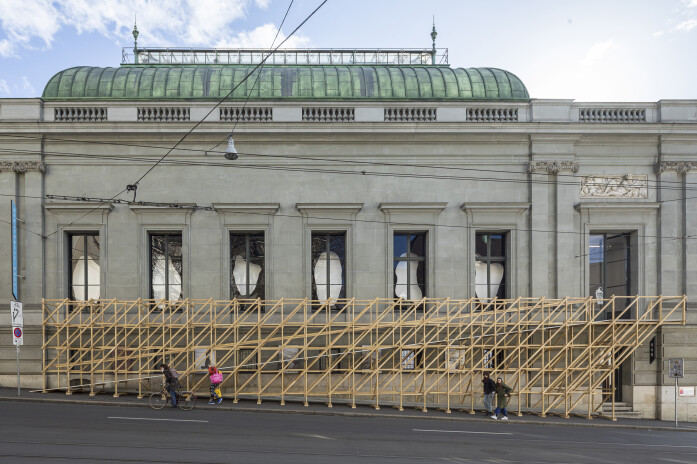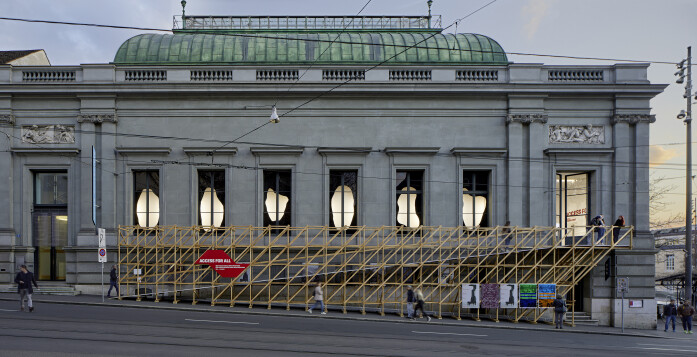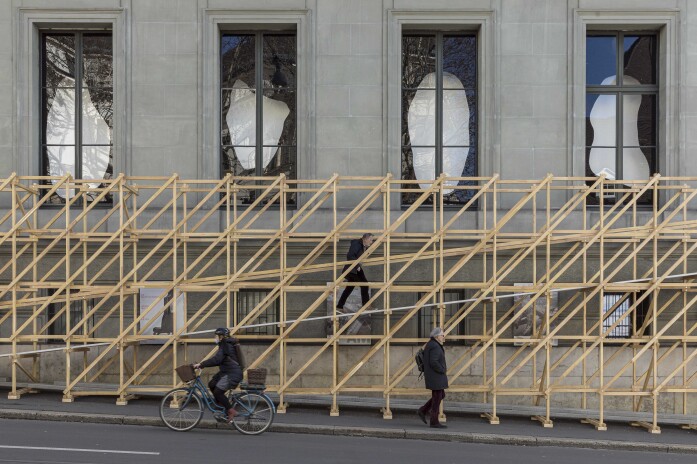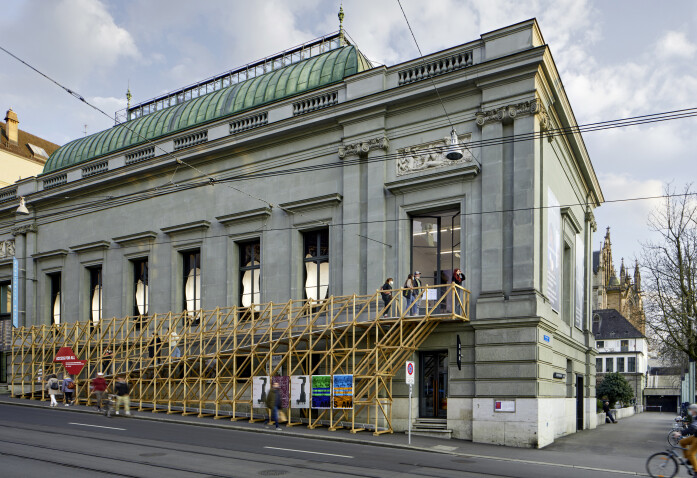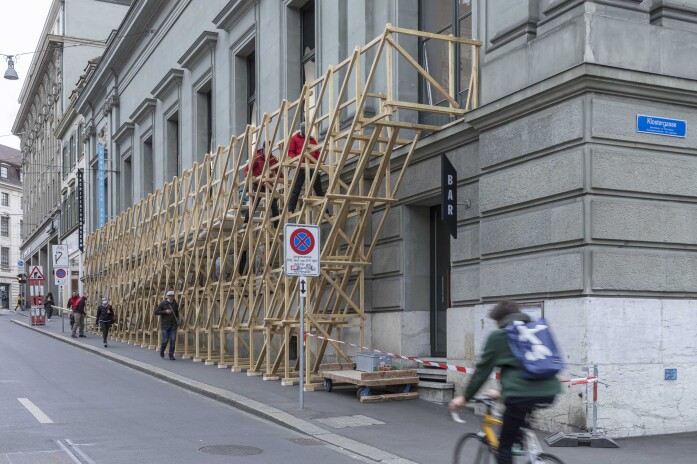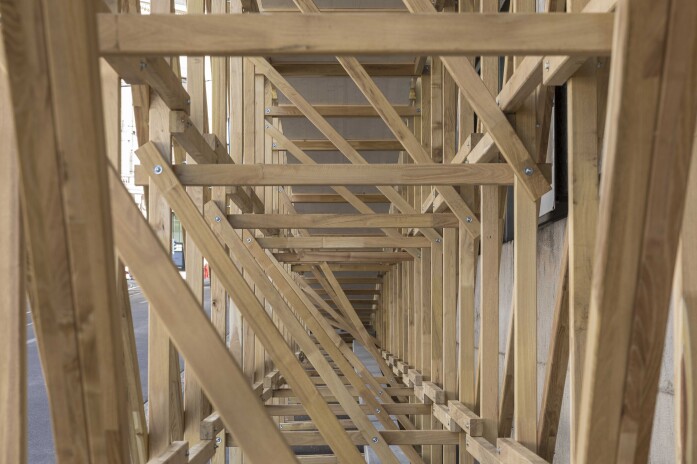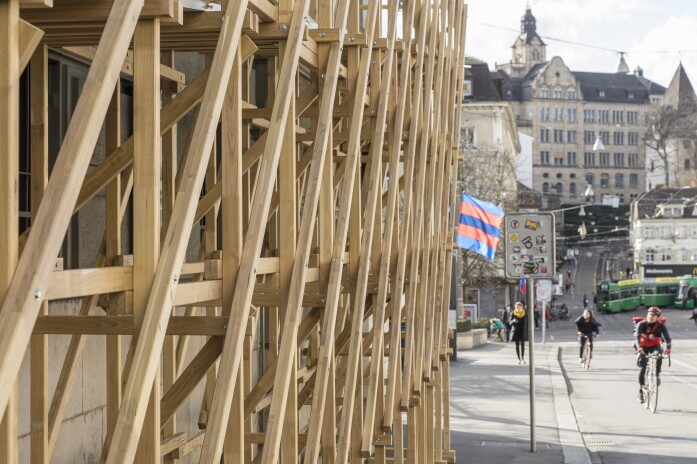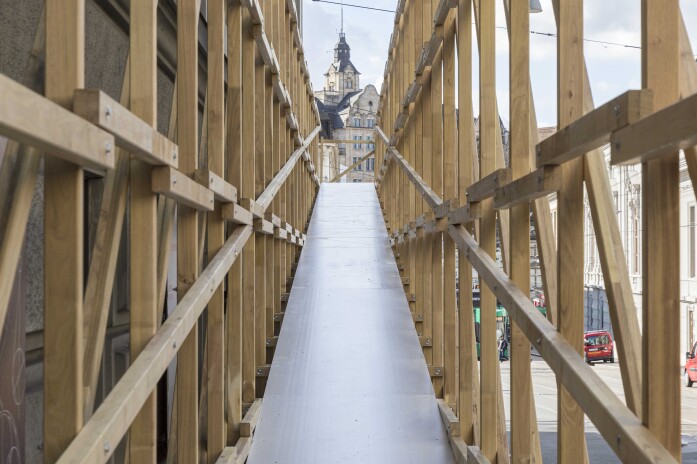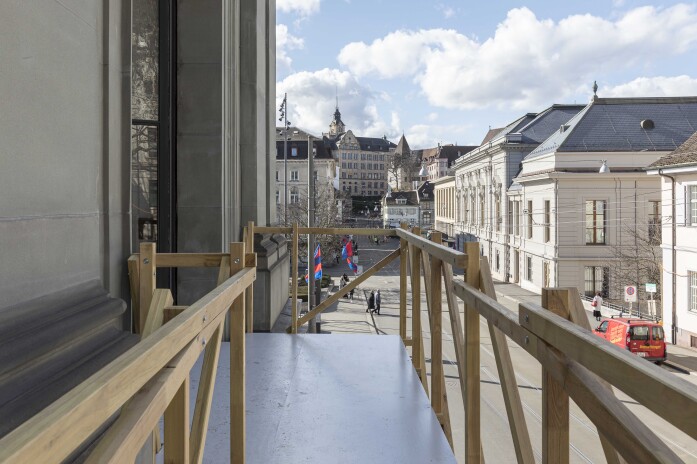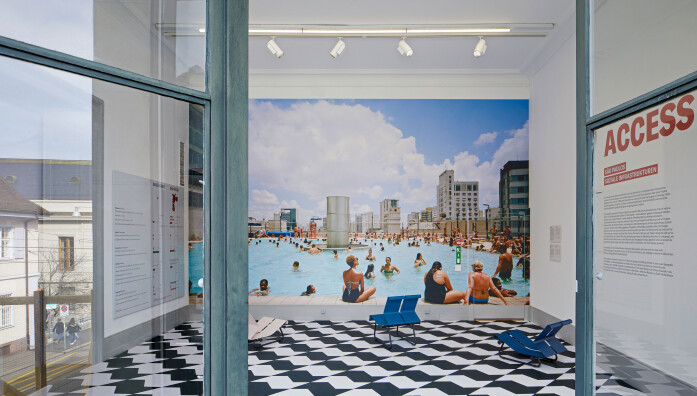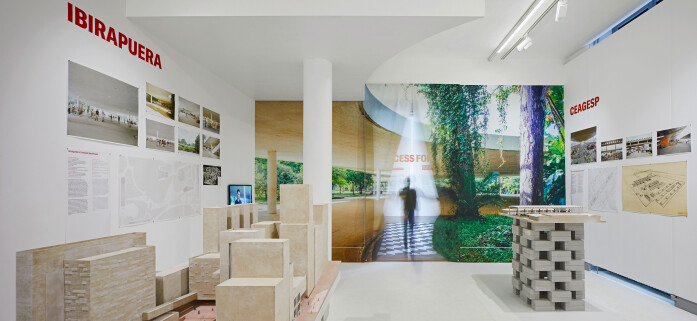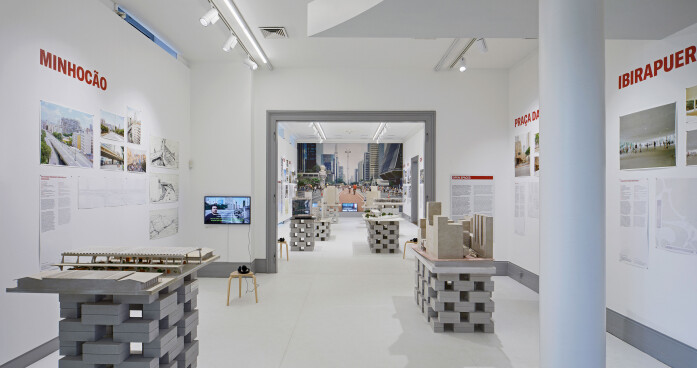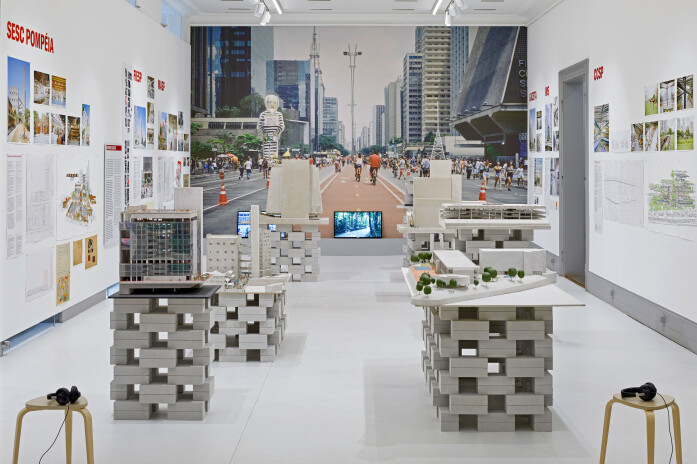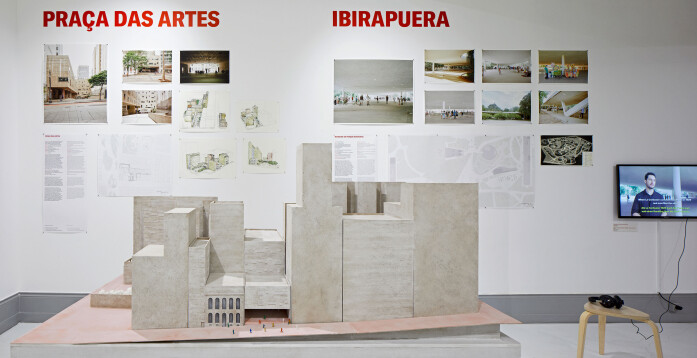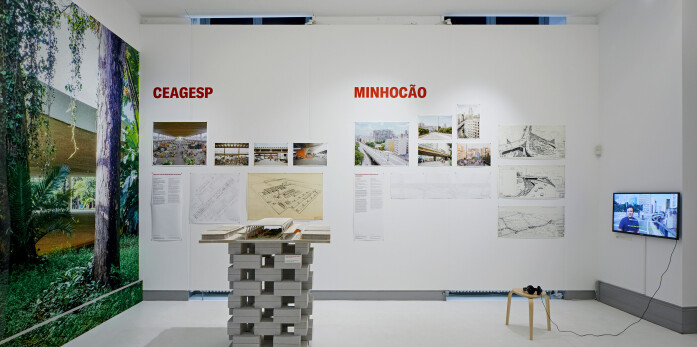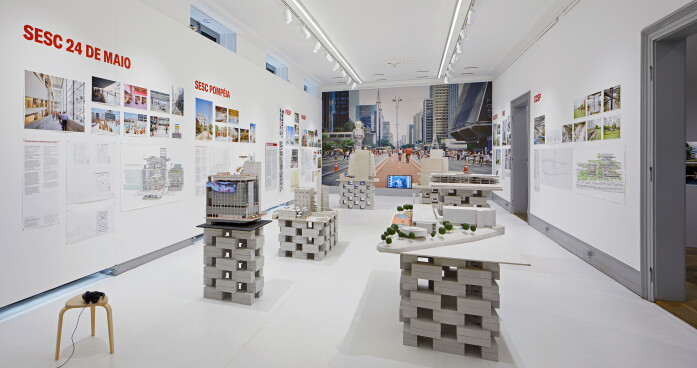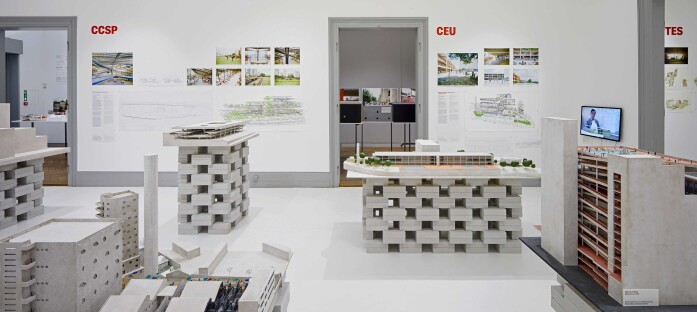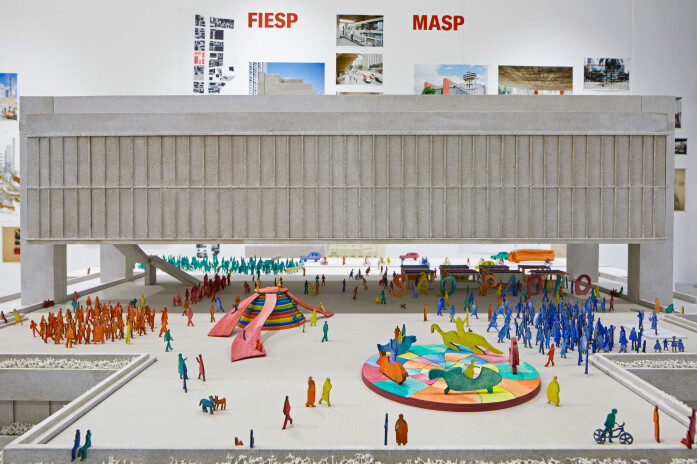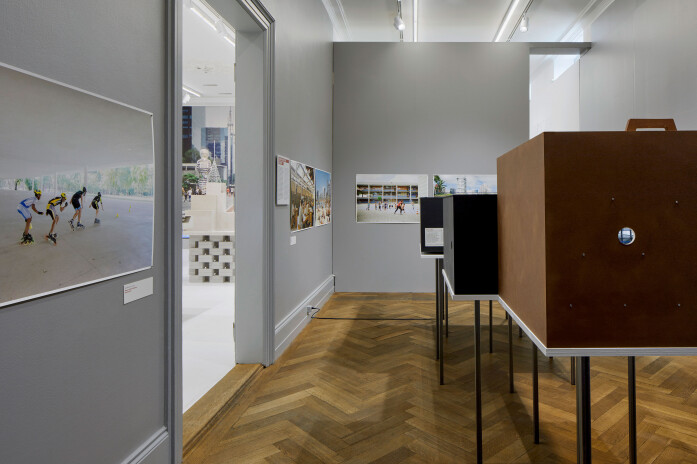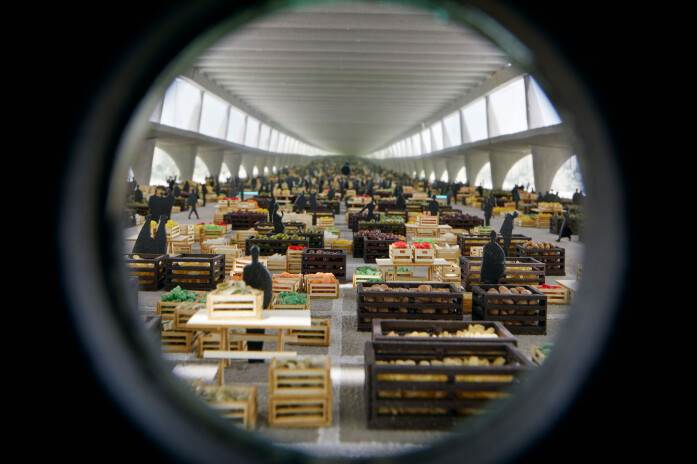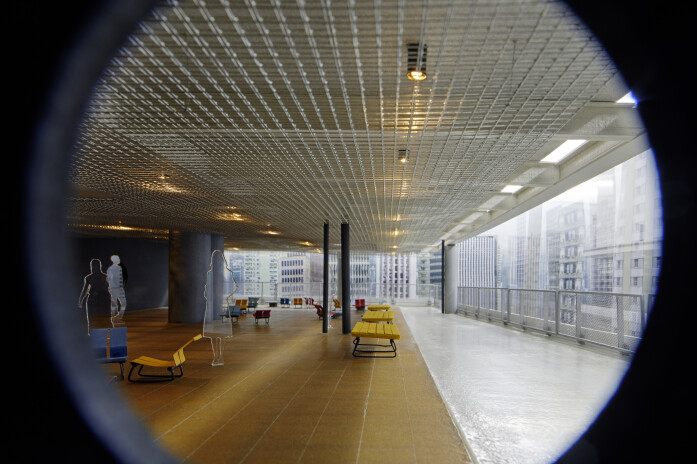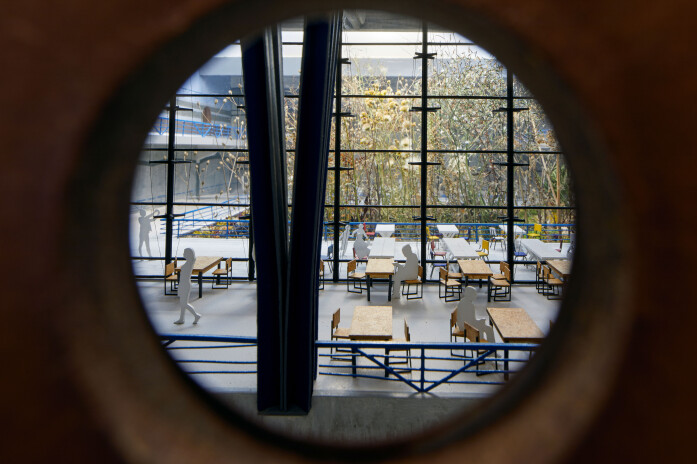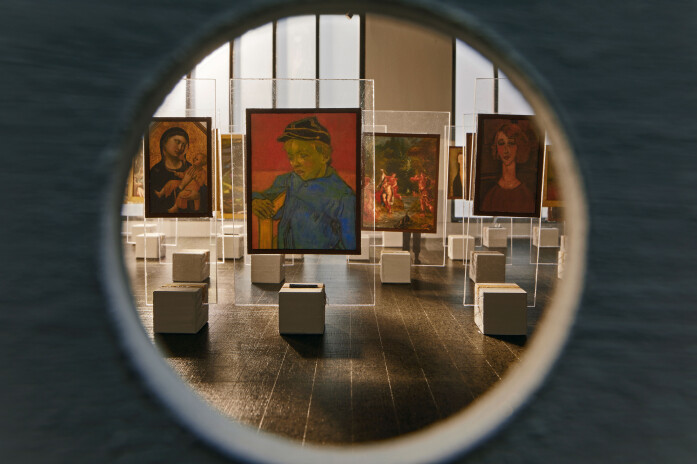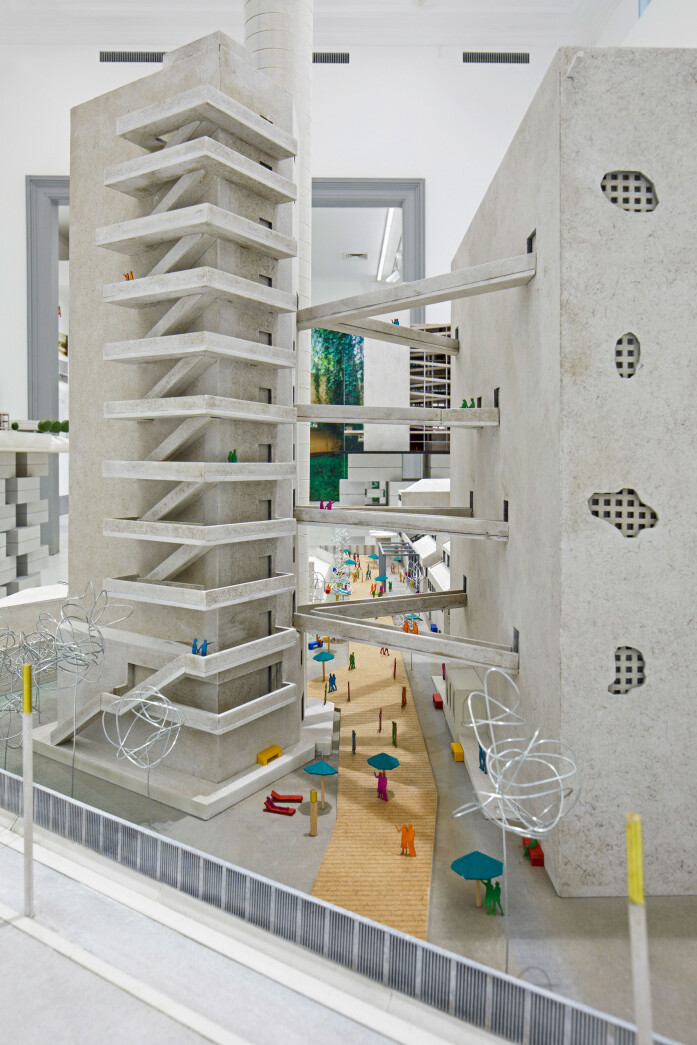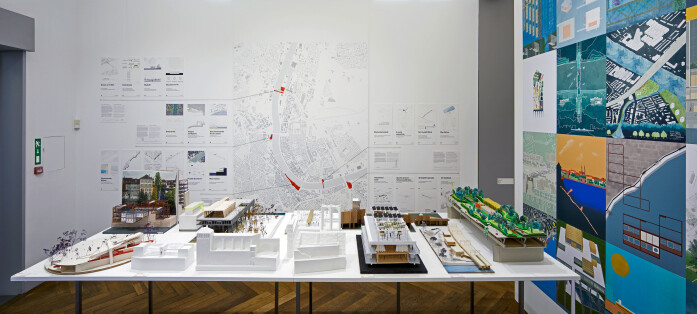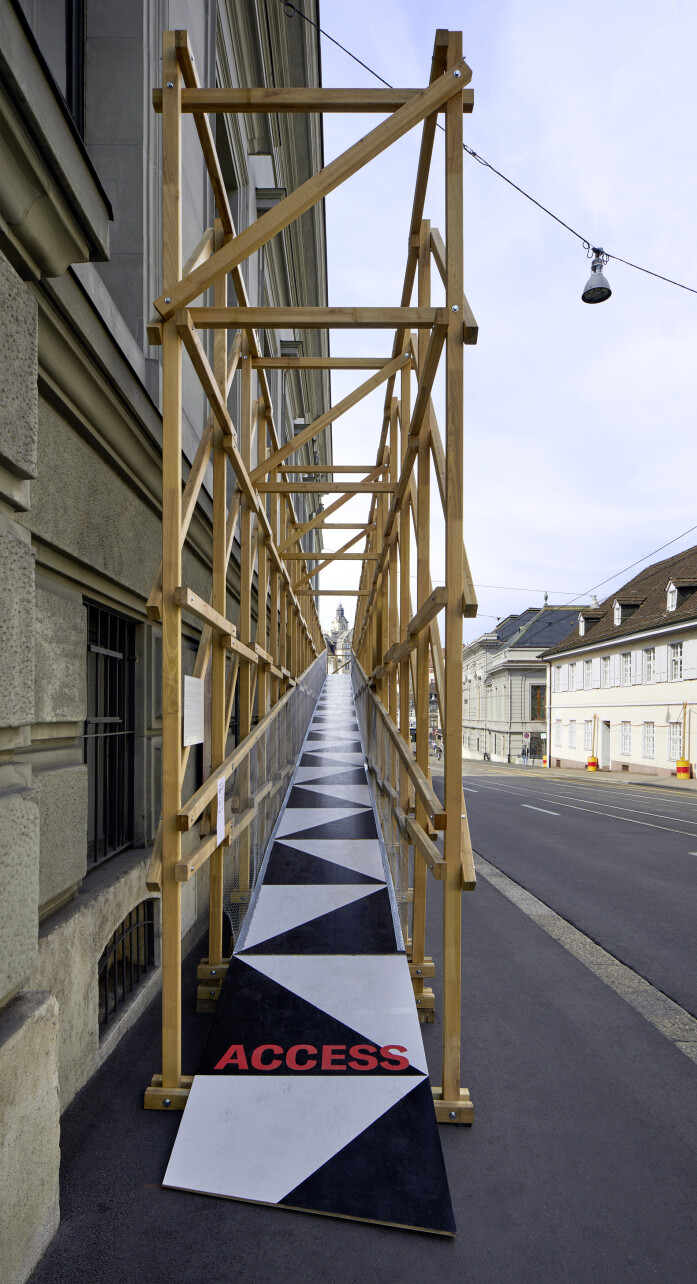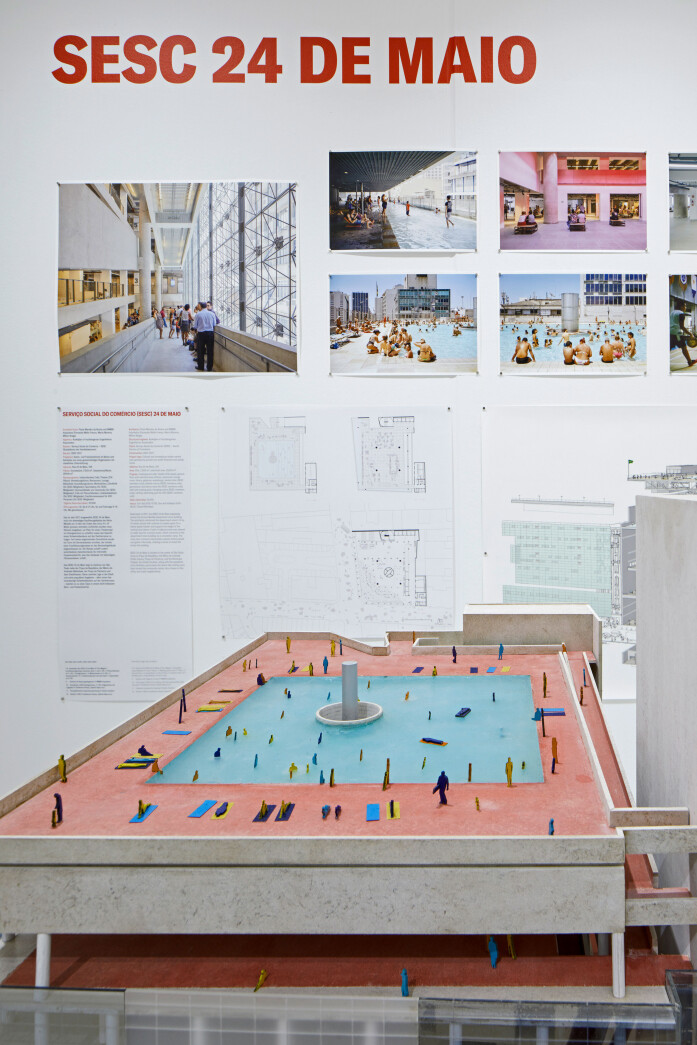ACCESS FOR ALL
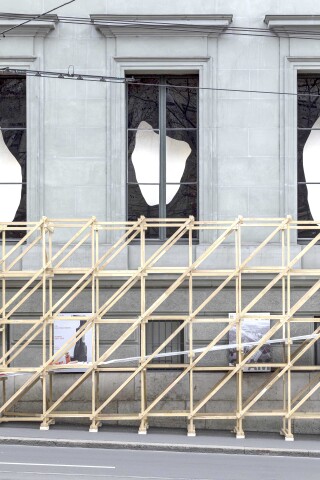
SÃO PAULO’S ARCHITECTURAL INFRASTRUCTURES
An exhibition by the Architecture Museum of the TU Munich adapted and expanded by S AM together with the Institute of Architecture FHNW. 20.03. - 15.08.2021
CLICK HERE Video Making-Of
CLICK HERE Video Preview YouTube
Scenography: Rahbaran Hürzeler Architects
Scenography Team: Shadi Rahbaran, Ursula Hürzeler, Eleonora Minchio, Marcel Wagner
Structural Engineer: Schnetzer Puskas Ingenieure - Kevin Rahner, Jochua Reinle
Construction: Hürzeler Holzbau AG, Lea Hürzeler
Curator: Daniel Talesnik
Curator Adaption S AM: Yuma Shinohara
Exhibition Photos: Ciro Miguel
Photos of the 'Access' ramp: © Laurian Ghinitoiu
Photos of the exhibition: © Tom Bisig
‹Access for All› takes an in-depth look at buildings, public spaces and architectural infrastructures of different scales showing how inclusive places have been created for São Paulo's urban society. It presents a fresh perspective on modern architecture in Brazil and sheds light on an urban building culture in which architecture not just dialogues with, but also actively shapes the city around it.
The exhibition, first shown at the Architecture Museum of the TU Munich, is here presented with a new scenography featuring scale models and visionary projects developed by students at the Institute of Architecture of the University of Applied Sciences and Arts FHNW Basel.
An urban intervention in the form of a ramp on the museum façade opens the museum to the city, extends the street into the building, and performatively demonstrates the idea of ‘access for all.’
Learning from São Paulo
The Rhine and its riverfront form the largest and most important public space in the city of Basel. In recent years, the banks of the Rhine – in particular on the Lesser Basel side – have been significantly upgraded. Residents on this right bank of the Rhine have gained better access to the river, transforming it into a space where all parts of society come together. If urbanity is measured in terms of heterogeneity, the Rhein might well be the most urban location in all of Basel. Yet one notices a surprising fact when one looks at the ground floor uses along the river: So many closed-off façades, so many garages! What might be the most attractive spots in the city are largely privatized or reserved for automobiles. At the same time, public and semi-public functions are – with the exception of the stretch around the Middle Bridge – few and far between. One hopes for more functions serving the local community along the river, analogous to the Dreirosenanlage, the bathing houses in the Rhine, or new links such as the riverfront path crossing over into France.
Under the motto ‘Access for All – Learning from São Paulo,’ students from the Institute of Architecture FHNW used the 2020 fall semester to develop speculative projects for sites along the Rhine in Basel. With the projects shown in the exhibition as a starting point, the students investigated how architects help shape the city through individual buildings and what influence these structures have on public space. In a process of knowledge transfer, the findings from the analysis were translated into strategies for their own projects for Basel. Five critical sites along the Rhine were investigated, reinterpreted, and reprogrammed. Distinctive, large-scale structures were developed to house functions serving the community, thus creating new places of repose and identification for Basel’s population.
The goal for each building was to develop a large-scale support structure that provides an overarching framework for the chosen program and contributes to the public spaces around it. In addition to the usual design instruments, the students made use of ‘plan images’ to further develop and communicate their ideas. These images summarize the most important concepts and intentions of the projects and facilitate understanding of their core statements.
* More about the exhibition
For decades, the Brazilian metropolis of São Paulo has seen investments in architectural infrastructures that help alleviate its lack of public space and fulfill a growing need for public spaces with cultural, recreational, and athletic functions. ‹Access for All› provides an in-depth look at these various buildings, public spaces, and infrastructures at different scales and how they create inclusive places for São Paulo’s urban society. The projects are presented with a focus on their program and day-to-day use, rather than their formal qualities, through newly commissioned photographs, films, plans, illustrations, models, and interviews, as well as archival documents. The emphasis is on how architecture weaves in and out of the city, as sidewalks merge into ramps and stairs, and at times reappear in the cityscape as elevated plazas or rooftop terraces.
The exhibition presents a fresh perspective on modern architecture in Brazil and sheds light on an urban building culture in which architecture not just dialogues with, but also actively shapes the city around it.It presents a fresh perspective on modern architecture in Brazil and sheds light on an urban building culture in which architecture not just dialogues with, but also actively shapes the city around it.

